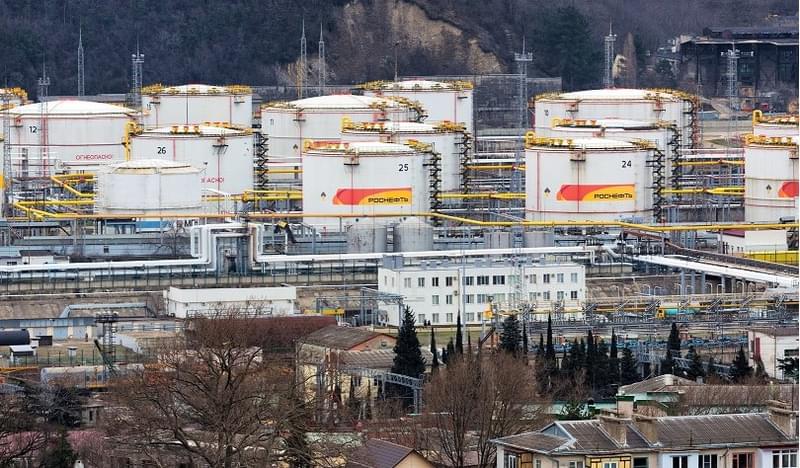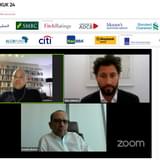Last Friday Russia’s Finance Ministry confirmed that the budget has been topped up with the funds from privatization sale of 19.5% of Rosneft, the partially state-owned oil giant, to Glencore and Qatar Investment Authority.
Earlier on that day, Rosneft CEO Igor Sechin reported to Russian President Vladimir Putin that the federal budget had received all proceeds from privatization stake in Rosneft. The deal was seen as a landmark achievement for Sechin, especially after a shortage of offers for the stake lead to expectations that Rosneft may have to resort to a share buy-back option.
The deal, claimed to be worth RUB710bn (US$11.66bn, including dividends), was also seen as a political coup for the company that has found itself in a lock of Western sanctions after the annexation of Crimea.
Rosneft and Glencore were quick to reaffirm that the transaction did not breach any sanctions regulations, with the latter’s statement saying: "The transaction is in compliance with applicable sanctions laws.”
But, politics aside, lack of information or willingness to discuss the deal by its participants is casting doubts over whether the transaction really occurred in the way Sechin described, and also about who became the ultimate shareholder of the 19.5%.
According to the official version, that Glencore and QIA would be "equal partners” – 50% each, with Glencore putting up €300mn in equities, the QIA providing a further €2.5bn and the rest coming from a syndicate of “appropriate banks”.
Furthermore, under the new deal Glencore will sell an additional 220,000 barrels (it already sells 170,000 under a deal signed in 2013) a day of Rosneft production over the next five years. As a final sweetener, Rosneft also announced that it is raising its dividend rate from 25% to 35%.
Devil in the details
But even as details of one of the biggest deals of the year in the oil industry emerged, contradictions seemed to pervade through the companies’ statements. Even the valuation of the stake differed, with Glencore putting it at €10.2bn and Rosneft – at €10.5bn. Sceptics also pointed to the facts that because of the commodity market slump, Glencore was heavily in debt last year to the tune of US$30bn, and was working to rebalance its budget this year.
“My understanding is that Glencore put up minimal equity,” commented Craig Pirrong, Director of Global Energy Management Institute at the University of Houston. “The Rosneft and Glencore disclosures make it clear that they assumed very little risk - only the 300mm euros. Since their ownership stake in the consortium is supposedly 50%, it means that they passed the risk off to a third party.”
“The exact way that Glencore is passing the risk to the bank syndicate is not entirely clear. The Glencore release says that a Russian bank has indemnified it against loss up to €1.5b. This means it has provided a put to Glencore. Puts aren't free, and I surmise that Glencore has paid for it by granting a call to Gazprombank. Thus, in essence, it is that bank that has the equity stake,” he added.
Meanwhile, the Qatari fund made no official mention of the privatization at all, with Qatari Emir Sheikh Tamim bin Hamad al-Thani only referencing it in passing during a meeting with the Russian president. The fund’s representatives left numerous media enquiries about its involvement without an answer.
“The Qatar side of the deal is completely opaque. QIA has said nothing. Whether they are passing risk of Rosneft stock to a third party is not clear at this time,” concluded Pirrong.
“The shareholder’s agreement seems to support the notion that Rosneft will remain the fiduciary holder of the newly acquired shares, leaving Glencore and Qatar with no voting rights,” claimed oil analyst, Robert Berke. “It’s hard to believe that any company making a multibillion-dollar investment in another company would so easily forego voting rights.”
Intesa's cold feet
According to Rosneft, financing for the remaining part of the deal would be taken up by a syndicate of international and local banks, led by Italy’s Banco Intesa Sanpaolo, which would put up US$7.4bn.
But that statement was soon undermined by Intesa’s response, which stated that “potential involvement in the financing operation is first of all conditioned to support only those initiatives that have as a prerequisite the full respect of the sanctions regime adopted by the European Union and the United States of America with regard to entities of the Russian Federation.”
The statement, remarkably, was issued shortly after the Russian government confirmed the transfer of funds to the budget, putting in question the proposed syndicated loan structure.
Intesa earlier this month was fined US$235mn by New York state's financial regulator for transactions involving shell companies that were suspected of breaking anti-money laundering regulations and violating bank secrecy laws.
Some have therefore speculated that Intesa distanced itself from Rosneft’s privatization due to pressure from the US authorities and investigations that were initiated in Italy and the EU. Analysts also have expressed doubts about Intesa’s ability to take on such a financial burden, particularly as it is unclear what kind of collateral the deal participants would be willing to offer.
“Intesa obviously has cold feet now - though it is not clear that their feet were ever warm, because their participation in the deal was mentioned only by Rosneft and Glencore, and not the bank itself,” noted Pirrong. “A plausible case can be made that it has been pressured by the US government, or that other banks that it had hoped to syndicate the loan with have been pressured by the USG. Suffice it to say that banks are not lining up to take a piece of this action.”
Shortly before the deal, Rosneft announced a new RUB1$tn (US$16.4bn) bond program and issued a RUB600bn note, which many suspected would go towards financing the buy-back. The announcement of the deal with Glencore and QIA seemed to dismiss those suspicions, but they returned as more details emerged.
Various sources have been quoted in the Russian media, suggesting that the pool of banks crediting Intesa included state-linked lenders, such as Gazprombank and Russian Regional Development Bank, itself affiliated with Rosneft.
“Since the payment into Russia’s budget was made on Friday, we can suggest that the deal was partly financed in Euros by Russian banks,” Sberbank CIB analysts’ report stated. “Most of those funds came from REPO auctions by the Central Bank, which used Rosneft’s local currency bond as collateral.”
As indirect confirmation of this version, the analysts point to the sudden jump in overall repo leverage of Russian banks from RUB86bn last week to RUB706bn on Friday, according to Bank of Russia’s data.
Berke is of a similar view: “Rosneft bonds for US$16bn, issued in November, were purchased by Russian banks on credit lines issued by the Russian Central Bank. The proceeds from the bond sale were transferred to the same bond-buying banks, which then provided the funds to underwrite the share purchase by Glencore and Qatar.”
Pirrong also agrees that the current picture seems to indicate that very little foreign funding was involved in the deal.
“My interpretation is that Glencore put up a nominal equity stake in order to get an advantageous offtake agreement. It essentially rented its name, so that Rosneft and the Russian government could say that the stake was sold to foreign firms, even though it is pretty clear in Glencore's case that the risk has been passed back to Russian banks or banks.”
It is worth noting that Glencore has been involved in similar transactions in the past. In 2013, a Glencore-led consortium agreed to pay US$1bn for a controlling interest in an Australian coal mine from Rio Tinto. The Swiss firm did so by creating a new company with Sumitomo, the Japanese trading house, under which both groups put equity (Glencore’s share stood at US$250mn) into the joint venture, which then raised debt. This scheme may have been recycled in the Rosneft purchase.
All in all, it appears that from the reputational point of view, Rosneft has been able to achieve its target of selling the 19.5% stake and returning (albeit, tentatively) on the global scene. It is also a strategic victory for Russia, which was able to advance its ties with Qatar, particularly as the company so far managed to navigate around the sanction traps.
But the question is, at what cost did this victory come and who will end up footing the bill. With the initial purpose of the privatization stated to be covering Russia’s budget deficit gap, one is bound to wonder if it was worth the trouble.









